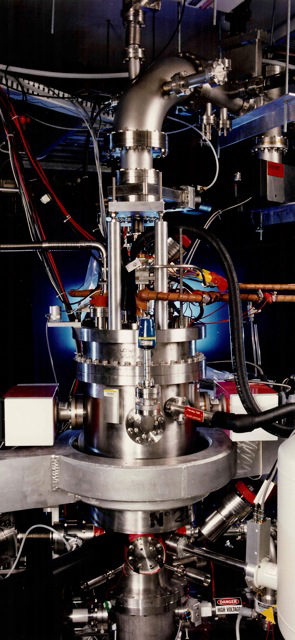Recent experiments done by a team of physicists at the Electron Beam Ion Trap (EBIT) facility at the National Institute of Standards and Technology (see photo) indicate that the theory of quantum electrodynamics (QED) — seen as a cornerstone of modern physics, explaining the behavior of electrons orbiting atomic nuclei — may require reformulation. Ironically, the term “QED” (from the Latin quod erat demonstrandum, “which was to be demonstrated”) is typically used to signal that a mathematical proof is complete; in this case, it seems further proof is required.

The NIST Electron Beam Ion Trap seen here was used to experiment with highly charged titanium ions. The results indicated that the ions behaved in ways inconsistent with quantum electrodynamics (QED) theory. While more experiments are needed, the data could imply that some aspects of QED theory require revision.
The experiments were conducted at NIST using wavelength dispersive spectroscopy from the University of Melbourne to obtain precision diffraction profiles of highly charged atoms. The tests indicate that QED theory as currently formulated may not provide a complete picture of reality. According to a paper published in Physical Review Letters, the team from NIST (Gaithersburg, MD), Australian Synchrotron and The University of Melbourne, (Australia), and the University of Debrecen (Hungary) measured the strongest resonant transition in helium-like titanium (Ti20+).
NIST physicist John Gillaspy, a member of the research team, explains: “If 20 of titanium’s 22 electrons are removed, it becomes a highly charged ion that looks in many ways like a helium atom that has been shrunk to a tenth its original size. Ironically, in this unusual state, the effects of QED are magnified, so we can explore them in more detail.”
QED predicts that when an electron orbiting the nucleus collides with a passing particle, the electron gains energy and moves to a higher energy state, then decays back to its original state, emitting a photon of a characteristic frequency (color). The NIST team found that when electrons in Ti20+ are excited in this fashion, the ion gives off photons that are noticeably different in color than QED predicts.
Gillaspy hopes the team’s finding will stimulate others to measure the emitted photons with even greater accuracy. Currently, the NIST team is preparing to release the results of measurements of other colors of light emitted from the exotic atoms that bolster the initial findings. For further information, contact John Gillaspy at 301-975-3236, or e-mail .
Advertisement





